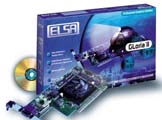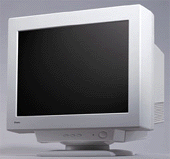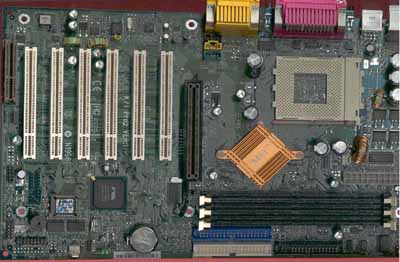Buyer's Guide: High-End Systems - December 2000
by Mike Andrawes on December 24, 2000 2:52 PM EST- Posted in
- Guides
High-end Professional
3D
A high-end professional
3D system requires a number of high-end components. CPU performance is critical
and we need more RAM here than any other system we've looked at previously.
The graphics requirements are also very different in the professional space
and a large monitor is critical.
 Processor
– AMD Athlon "Thunderbird" 1.2 GHz- $300
Processor
– AMD Athlon "Thunderbird" 1.2 GHz- $300
At similar clock
speeds, the Athlon holds a significant advantage in price and performance in
professional 3D applications. That, of course, makes the decision for our High-End
Professional system's CPU a no-brainer. We’ve chosen a Socket-A Athlon 1.2 GHz,
which means that it's using the new Thunderbird core with on-die cache.
Besides the direct performance benefits of full speed on-die cache, we also get the side benefit of enhanced overclockability. If you're willing to overclock our CPU, you can save some money by going with the 700 MHz model, most of which will hit 900 - 950 MHz at default voltage, all without exotic cooling. The 1 GHz and above chips may overclock a bit further thanks to its use of copper interconnects.
For more information on all Athlon processors, read our Athlon "Thunderbird" 1.2GHz & Duron 800 MHz Review and our Thunderbird / Duron Overclocking Guide.
Motherboard – Microstar
K7T Pro2A - $130
The availability of AMD 760 motherboards
is still non-existant for the "do it yourself" market for the time
being, so we'll have to wait at least until early next year before DDR SDRAM
systems make an appearance here. Boards using the KT133A
should be here even sooner, however, and it looks like they'll offer 90% of
the performance of DDR SDRAM using standard PC133 memory. To top it off, KT133A
boards should cost about the same as current KT133 boards since the North Bridges
are pin compatible and the same PCB layout can be used in most cases.
The VIA KT133 is here now and is the best chipset for the Athlon right now. We recently had our second KT133 Socket-A Motherboard Roundup where we looked at as many boards as we could get a hold of. Once again, one board stood out head and shoulders above the rest, but this time it was the MSI K7T Pro2 edging out the previous champ ABIT KT7-RAID. The key to overtaking the KT7-RAID was the excellent stability of the K7T Pro2, which surprassed all other KT133 boards we've tested to date, and the long awaited addition of multiplier adjustments for overclocking purposes.
The K7T Pro2A that we've chosen here is the same as the K7T Pro2 but with VIA's 686B South Bridge replacing the old 686A and thus adding Ultra ATA/100 support. Since there's no RAID support, we'll have to add an external controller, which does raise the cost a noticable amount.
The former champ, ABIT KT7-RAID, is certainly still a very good choice, as is the ASUS A7V for their solid stability and excellent feature sets, including optional on-board RAID controllers.. The EPoX EP-8KTA2, Soyo K7VTA, and FIC AZ11E are also decent choices for overclockers thanks to their multiplier controls and they'll save you a few bucks even.
For more information, read our ABIT KT7-RAID Review, ASUS A7V Review, MSI K7T Pro2 Review, and Socket-A KT133 Motherboard Roundup.
Memory – 512MB Corsair
or Mushkin CAS 2 PC133 SDRAM (2x256MB DIMM’s) – $200 x 2
Even though memory
is relatively cheap these days, it is a key factor in the performance of most
professional apps. For a high-end system like this, 512MB is not unreasonable
and easily fits within the budget.
As for the exact brand of memory, we recommend Corsair or Mushkin modules. We use them in our test systems and have had absolutely no problems with them.
 Video
Card – ELSA GLoria II (NVIDIA Quadro) - $600
Video
Card – ELSA GLoria II (NVIDIA Quadro) - $600
NVIDIA’s Quadro
is simply the most powerful workstation 3D accelerator we’ve tested to date.
Based on the same T&L GPU of the GeForce, the Quadro runs at a higher core
clock speed, 135 MHz, and enables certain features that were left disabled on
the GeForce. Among these features is enhanced support for anti-aliased points
and lines, which, although it isn’t a commonly used feature with most users,
was an extremely poor performance point for the GeForce.
With their previous experience in the professional market, ELSA was able to score exclusive rights to manufacture the Quadro. The Gloria II is ELSA’s implementation and comes with 64MB SDR SDRAM. While a DDR version of the Quadro has been announced, and even tested by AnandTech, it’s not actually available anywhere at the moment. At $650, the SDR version of the Gloria II is a relative steal compared to some of the other professional 3D accelerators out there. Throw in the fact that it’s fully support under Windows NT 4.0, Windows 2000, and Linux and it becomes quite clear that the Quadro is the best choice.
NVIDIA has already announced a professional version of the GeForce 2 GTS, the Quadro2 Pro and the Quadro2 MXR. The Quadro2 Pro is GeForce2 GTS based, while the MXR is the GeForce2 MX based part - ELSA once again has the "exclusive" distribution rights on cards using these chipsets. ELSA has finally announced these cards, the GLoria III and Synergy III, respectively, but they still haven't shown up for purchase anywhere. With that in mind, it seems wise to hold off a bit if you can. Granted, we've been saying that for 3 months now, but hopefully the Quadro2 Pro really will be available soon. For more information, see our ELSA Gloria II Review.
 Monitor
– iiYama VisionMaster PRO 510 - $900
Monitor
– iiYama VisionMaster PRO 510 - $900
Using a Mitsubishi
Diamondtron NF, the iiYama VisionMaster Pro 510 provides a perfectly flat display
surface using the same technology in Sony’s FD Trinitron models, but at a lower
cost. Make sure you can deal with the damper wires that all Trinitron style
tubes have. The VisionMaster PRO 510 is a 22” monitor and has been highly acclaimed
here on AnandTech and by owners alike.
For more information, read our iiYama VisionMaster PRO 450 and VisionMaster PRO 510 Reviews.











0 Comments
View All Comments